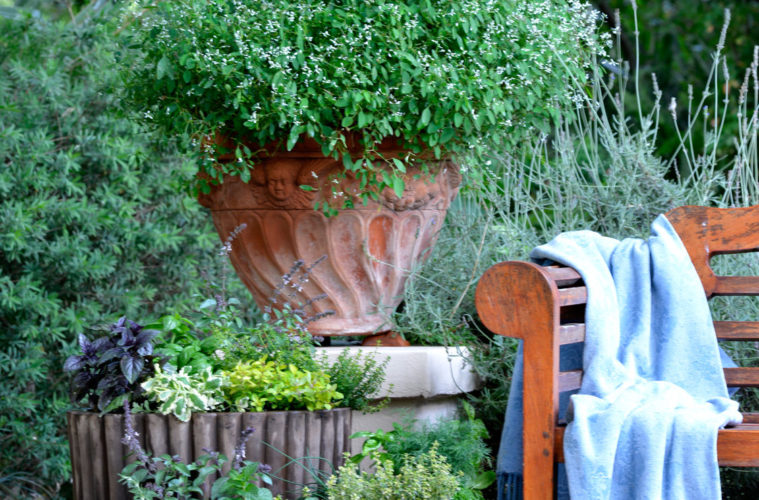If you have a small garden and want to grow herbs “all you need are a couple of containers and a sunny spot,” says Louis van Aswegen of Healthy Living Herbs. Here are his top tips for growing herbs in pots
GROWING TIPS
- A container is a closed system depending entirely on the gardener for water, nutrition and the introduction of beneficial soil organisms, through the inclusion of organic fertiliser (or worm compost) in the potting mix.
- To ensure a consistent supply of nutrients, include slow-release organic fertiliser in the potting mix. Liquid fertiliser, applied once a month, is simply a supplementary feed.
- How often pots need water depends on their position, the temperature and rainfall. A rule of thumb is when the surface appears dry, give them a good soak. This may be three times a week in summer but less in cooler months.
Louis’ step-by-step guide to planting a herb container:
Louis selected chives, lemon thyme, basil, parsley and oregano as a First Aid collection because they have both culinary and healing properties.
WHAT YOU’LL NEED
- Herb seedlings of your choice
- Container
- Coir (you can use a coir lining for a hanging basket.)
- Stones or pot shards
- Shredded bark and compost
- Palm peat (hydrate the compressed brick)
- A tablespoon of 3:1:5 organic fertiliser

1. Water the herbs while they’re still in their pots.
Why: It helps to lessen transplant shock and the moistness reduces the resistance that may occur when the plant is put into a different growing medium.
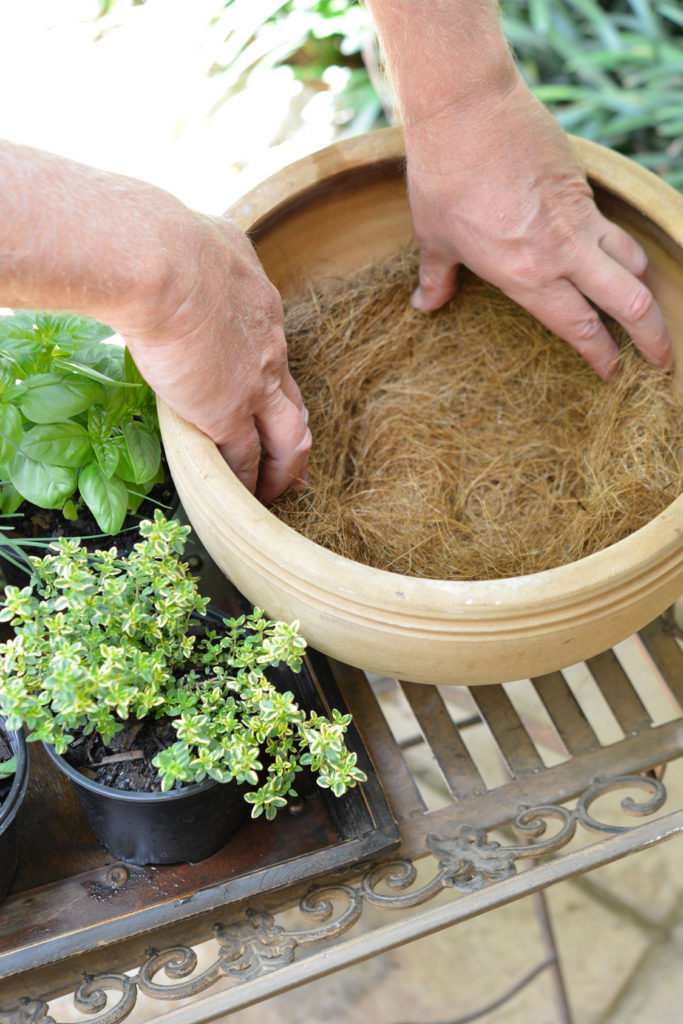
2. Line the bottom of the container with the coir.
Why: Stones and pot shards can block the drainage holes. Coir is recommended for containers with large drainage holes (to keep the potting medium in), but if the drainage holes are small, pots will drain better without anything in the base.
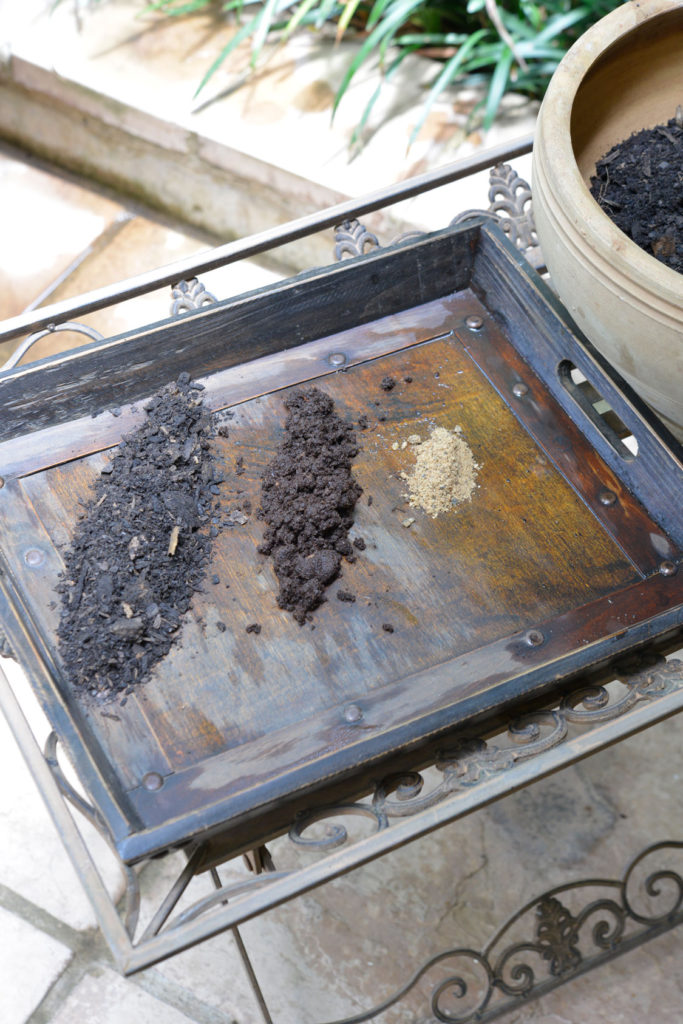
3. Make a potting mix by combining two-thirds shredded bark and compost with one third palm peat and the 3:1:5 organic fertiliser.
Good to know: This mixture has good drainage and sufficient nutrients. (Culterra Professional Potting mix is a commercial alternative.)
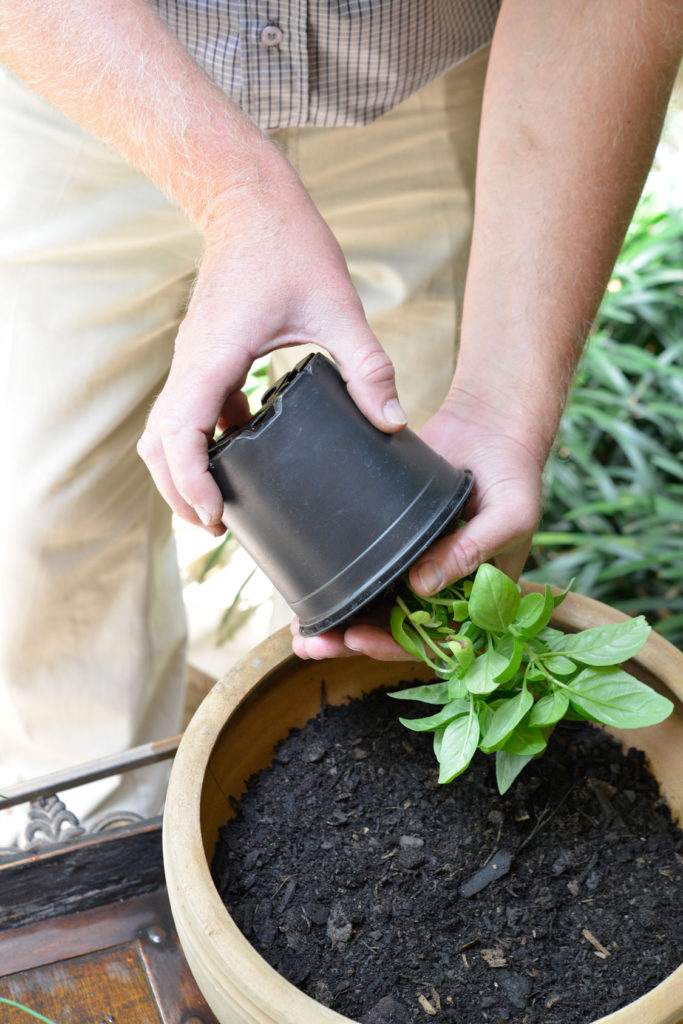
4. Half fill the pot with the potting soil mix and arrange the herbs.
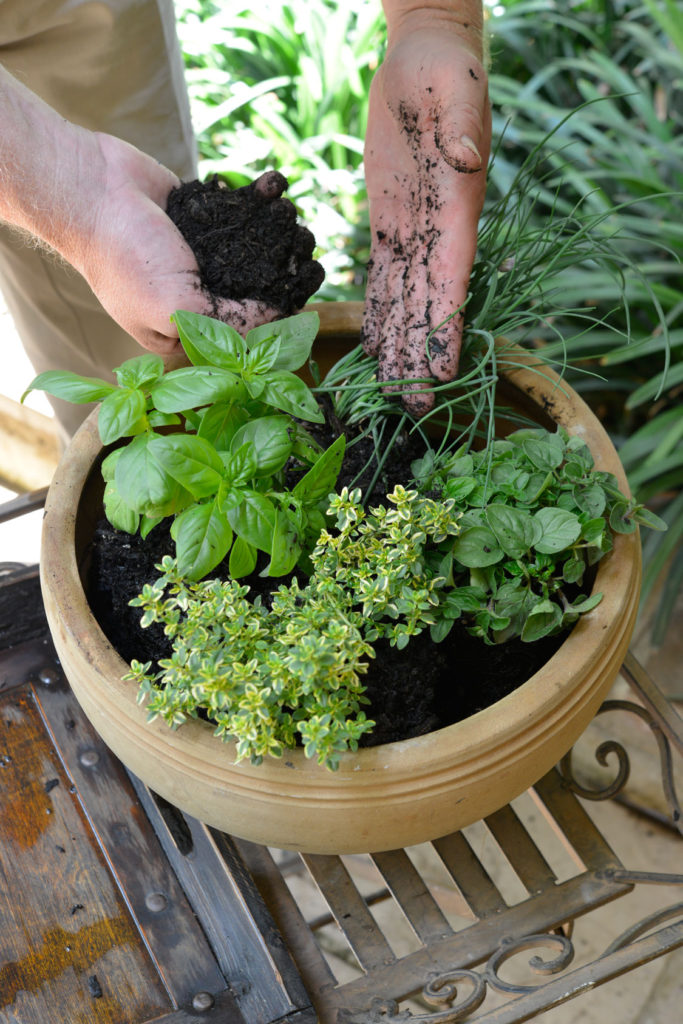
5. To plant, remove each herb from its pot, by turning the pot upside down, squeezing the pot with your fingers, then tilting the pot while holding the plant in place with two fingers and letting the root ball slip out.
Why: Pulling the plant out of the pot by its stem will damage the plant.
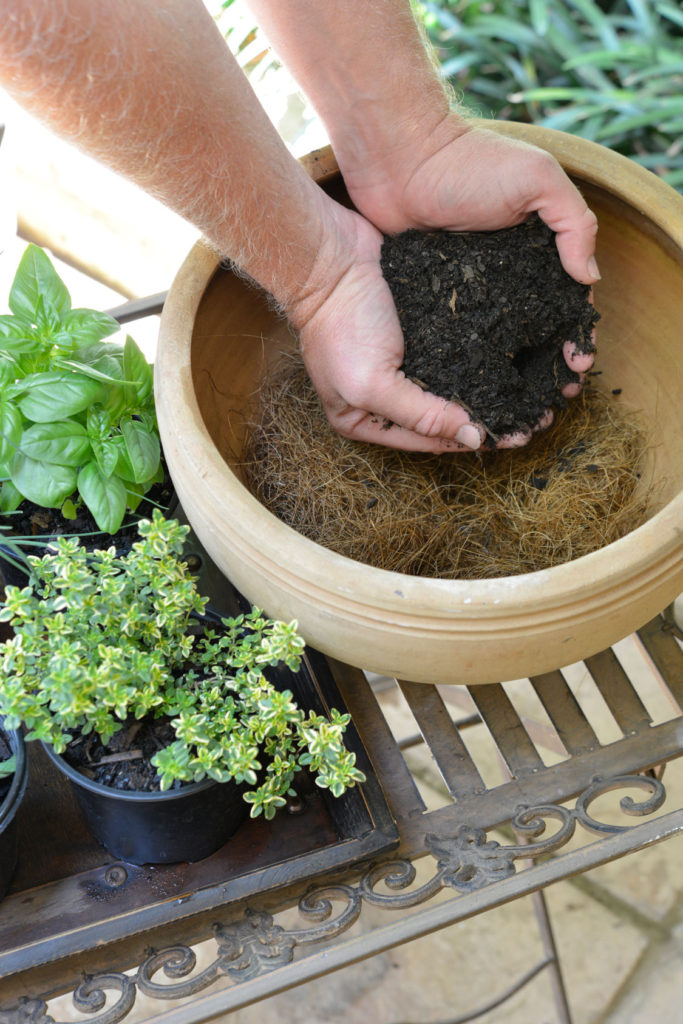
6. Place the plant on the potting soil mix just under the rim of the pot.
Good to know: It’s not necessary to tease out the roots, even if the plant looks root bound. Teasing the roots can damage the fine hair roots and increase transplant shock for the plant.
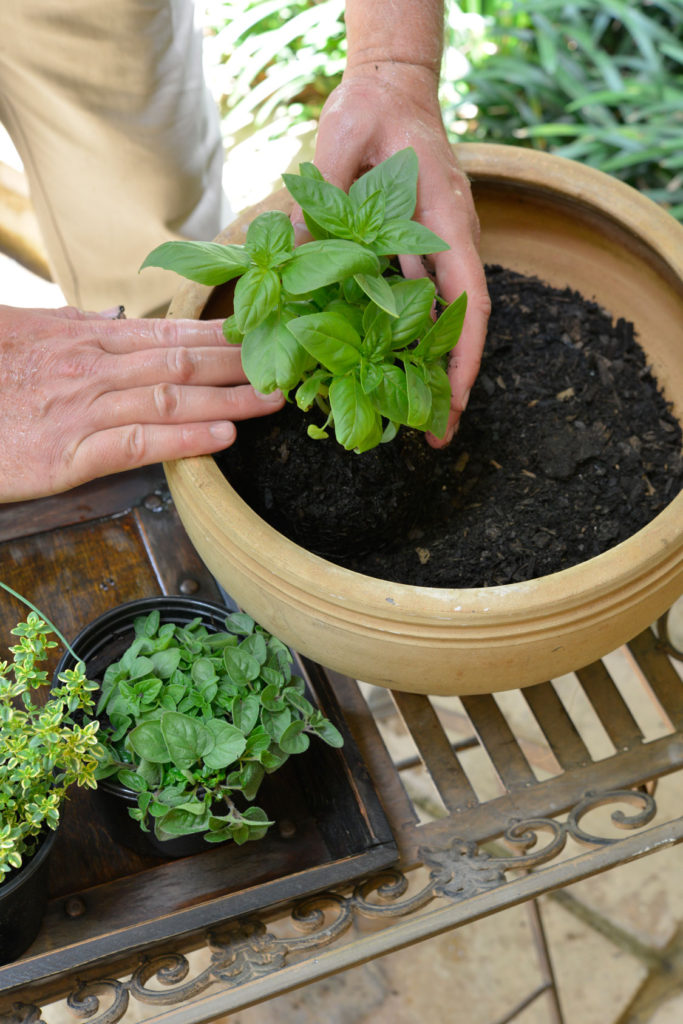
7. Once all the plants are in place, fill in with potting soil mix, making sure that the plant is at the same level in the container as it was in the original pot. Firm the soil around the plants.
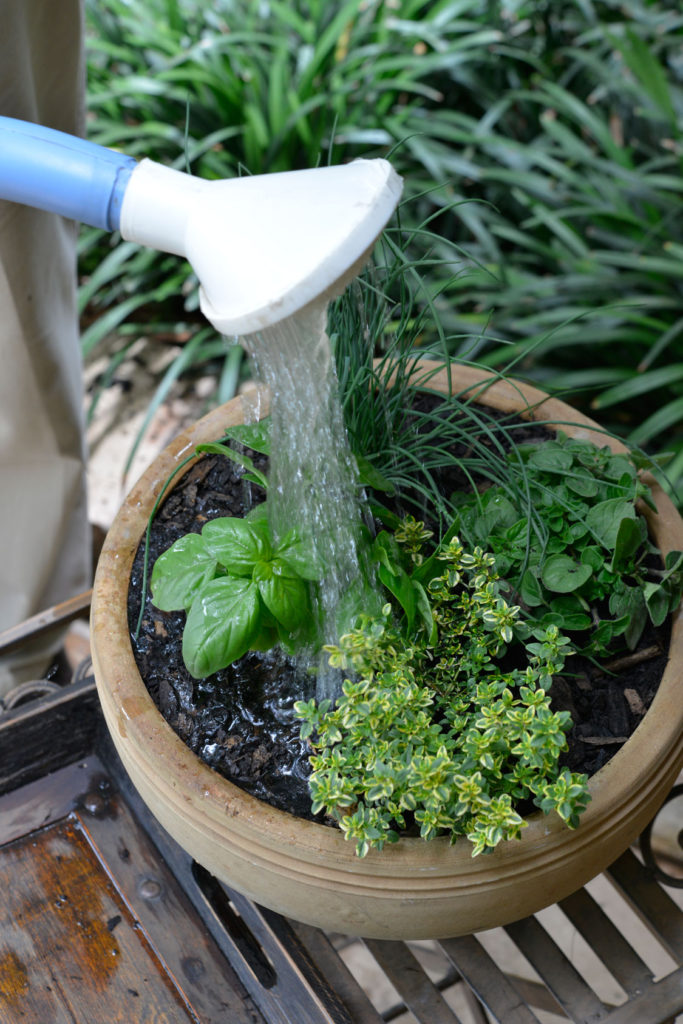
8. Water well to settle the soil around the plants.

